FORTEPRO
Research Cooperation for Tissue Engineering and Rapid Prototyping
ForTePro is a research cooperation for tissue engineering and bone substitutes from rapid prototyping that started in spring 2002. FORWISS contributes to subproject RP2 of this research cooperation which specialized to manufacturing custom implants by applying direct rapid-prototyping techniques. Besides research for appropriate bio-materials, 3D-printing of hydroxylapatite is an essential matter here.
Therefore the FGB of Technical University, Munich develops the FortBone2002 printer. The control software for this printer was implemented by FORWISS Passau based on the object-oriented interface for machines of the rapid-prototyping-software Rapix3D. Sequencing of the printer and the associated data-processing from the triangulated object data (STL or PLY format) are managed by Rapix3D.
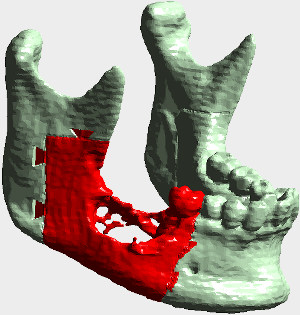 | 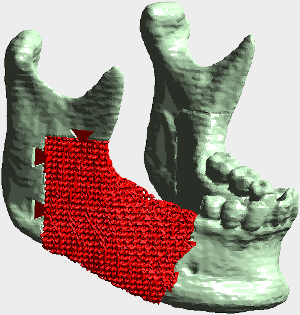 |
| lower jaw with cancer | lower jaw with custom implant |
| In the desired case of application the object data to be printed typically describe 3D-grids, bounded by the shape of the original bone that has to be replaced. The huge size of these object data, consisting of more than one million triangles, and their complex topology, with object details in the range of a tenth of a millimeter, imply demanding requirements to the visualization and the slice-data calculation process of the used RP-software. A detail reduction for complex objects that is initiated automatically guarantees a fluent interactive visualisation of the objects while essential geometric details are retained. |
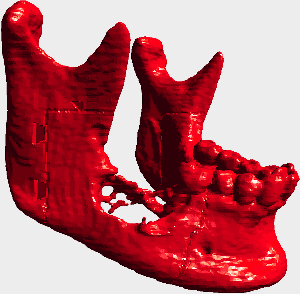 | 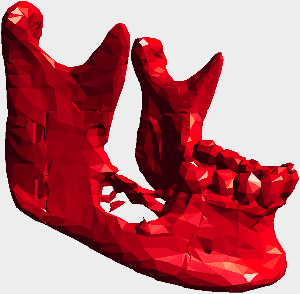 |
| original, 90'000 faces (shaded) | reduced, 10'000 faces (shaded) |
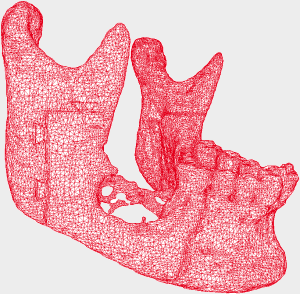 | 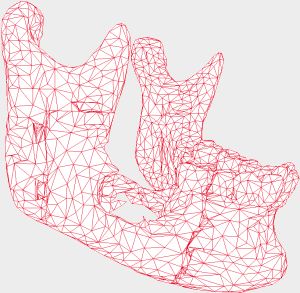 |
| original, 90'000 faces (wireframe) | reduced, 10'000 faces (wireframe) |
| In 3D-printing with hydroxylapatite the geometric fidelity of the printouts can be improved by printing embedded support into the workspace. Hence the Support3D feature of Rapix3D provides a tool that generates support structures parametrized by the user according to the special spatial situations in a 3D-grid. It would be impossible to detach support elements lying inside the grid of the 3D-print when unpacking the 3D-print from the printer's workspace. Such elements must be excluded from the building process. They can be avoided by choosing the parameters for the support generation appropriately. |
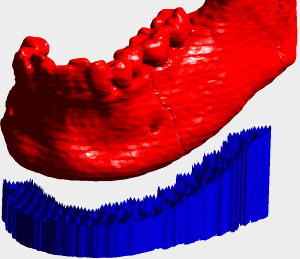 | 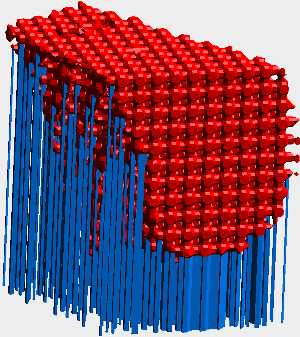 |
| support structure for lower jaw | support structure for custom implant |
| Printing rear sides (directed straight face-down) has shown to be problematic for hydroxylapatite. To avoid them in the building process Rapix3D provides a tool for recognition and visualisation of rear sides. Via an automated search, optionally with a fixed tilting-angle to the object's current orientation, a corresponding minimization can be initiated and applied. |
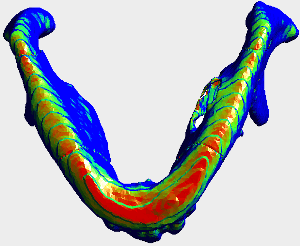 | 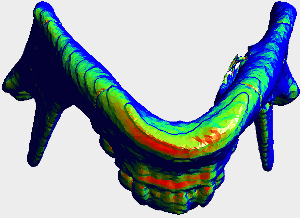 |
| critical rear sides (original orientation) | critical rear sides (best 30 degree tilted orientation) |
For information see http://www.fortepro.de/